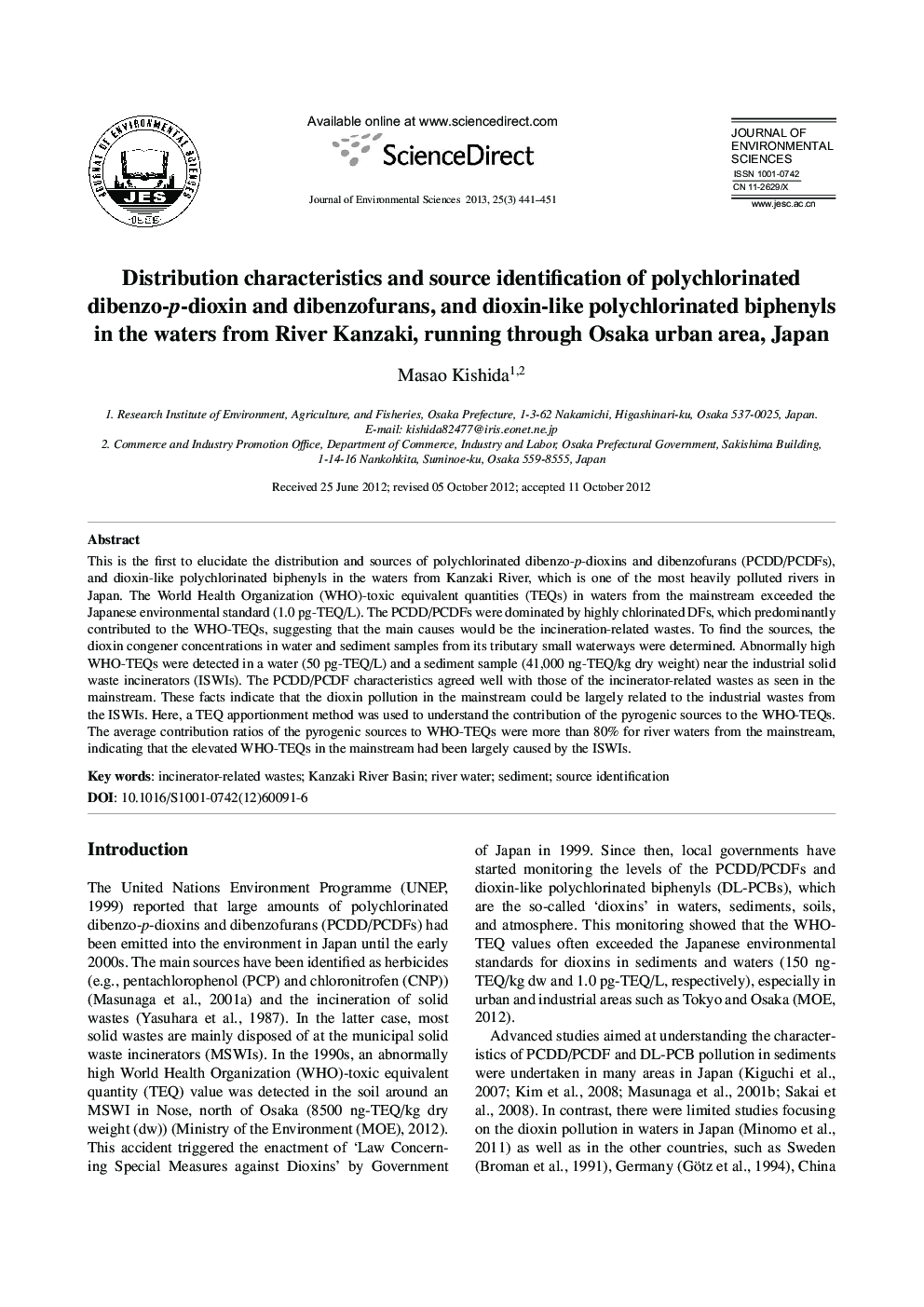| Article ID | Journal | Published Year | Pages | File Type |
|---|---|---|---|---|
| 4454871 | Journal of Environmental Sciences | 2013 | 11 Pages |
This is the first to elucidate the distribution and sources of polychlorinated dibenzo-p-dioxins and dibenzofurans (PCDD/PCDFs), and dioxin-like polychlorinated biphenyls in the waters from Kanzaki River, which is one of the most heavily polluted rivers in Japan. The World Health Organization (WHO)-toxic equivalent quantities (TEQs) in waters from the mainstream exceeded the Japanese environmental standard (1.0 pg-TEQ/L). The PCDD/PCDFs were dominated by highly chlorinated DFs, which predominantly contributed to the WHO-TEQs, suggesting that the main causes would be the incineration-related wastes. To find the sources, the dioxin congener concentrations in water and sediment samples from its tributary small waterways were determined. Abnormally high WHO-TEQs were detected in a water (50 pg-TEQ/L) and a sediment sample (41,000 ng-TEQ/kg dry weight) near the industrial solid waste incinerators (ISWIs). The PCDD/PCDF characteristics agreed well with those of the incinerator-related wastes as seen in the mainstream. These facts indicate that the dioxin pollution in the mainstream could be largely related to the industrial wastes from the ISWIs. Here, a TEQ apportionment method was used to understand the contribution of the pyrogenic sources to the WHO-TEQs. The average contribution ratios of the pyrogenic sources to WHO-TEQs were more than 80% for river waters from the mainstream, indicating that the elevated WHO-TEQs in the mainstream had been largely caused by the ISWIs.
